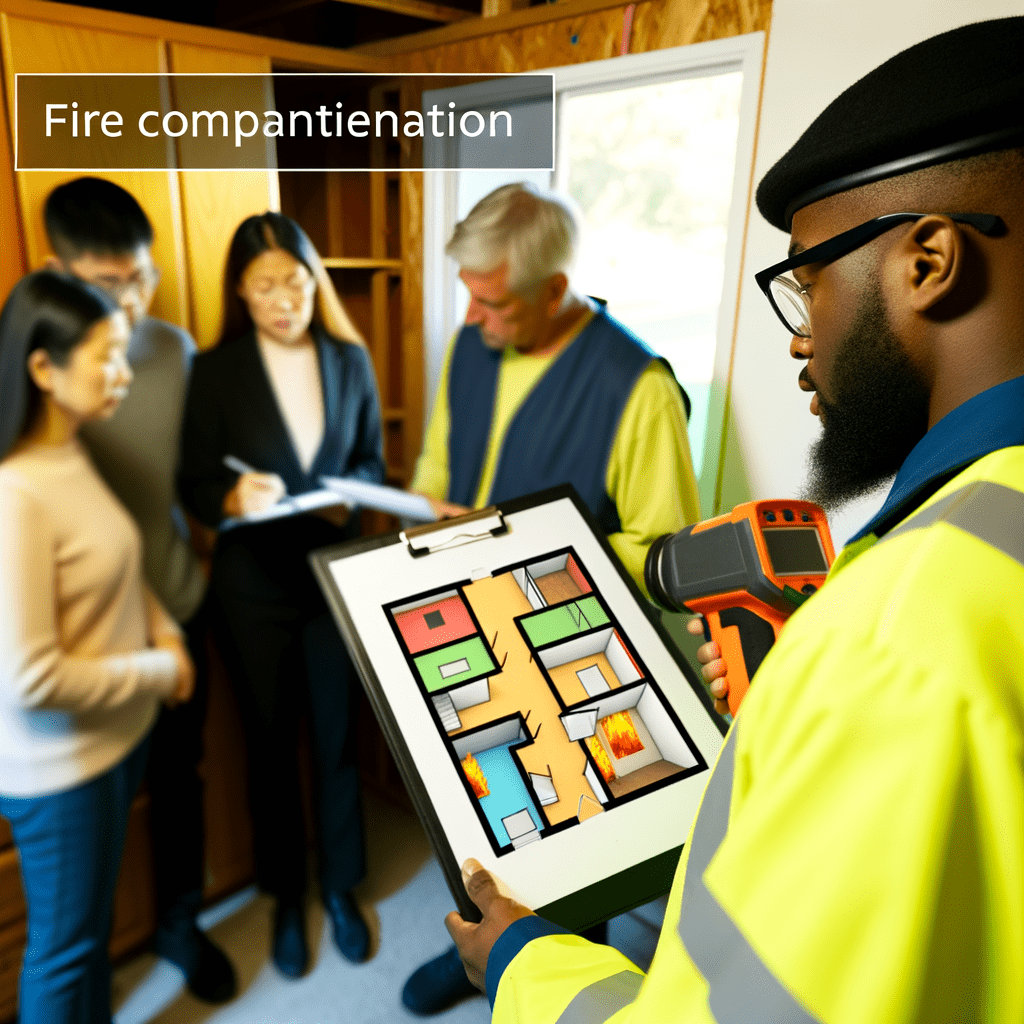Navigating the Maze of Fire Compartmentation: A Building Surveyor’s Perspective
The landscape of property acquisition continues to evolve, adapting to the corresponding changes in building regulations, safety standards, and construction methodologies. Among these intricacies is the often misunderstood concept of fire compartmentation. At face value, the term—pertaining to a building’s resilience against fire—seems straightforward. However, delving deeper brings to light its technical complexities, its vital role in safeguarding properties, and its ultimate significance in real estate investment decisions.
Fire compartmentation is a built-in firefighting strategy integrating discrete fire-resistant compartments within a building to prevent the uncontrollable spread of fire and smoke. Embarking upon the labyrinth of fire compartmentation from a building surveyor’s perspective fortifies property investments against the ravages of fire-related losses.
The Fundamentals of Fire Compartmentation
Understanding fire compartmentation begins with acknowledging it as an active participant in a more extensive fire safety system. It works hand in hand with fire detection and alarm systems, emergency protocols, and fire escapes. Each compartment is designed and constructed to resist a fire for a given period.
The Fire Safety Order of 2005
Falling under the Regulatory Reform (Fire Safety) Order 2005, fire compartmentation is a standard aspect of fire risk assessments, thereby helping ensure that people, property, and investments are suitably protected. As per this Fire Safety Order, a responsible individual—typically the employer in a commercial setting or the proprietor in a residential property—is mandated to meticulously evaluate, control, and lessen the risks.
Demystifying the Fire Rating
Fire compartments should meet an appropriate fire rating, defining its resistance against penetrating fire and containing the fire within its boundaries. The fire rating—usually specified in minutes—indicates how long the fire compartment would continue to perform its function under fire conditions. Factors like the type of construction, materials used, and the compartment’s criticality often influence the fire rating allocations.
The Role of Building Codes
Building codes in the UK, such as the British Standard 9999, British Standard 9991, and Approved Document B, lay down clear stipulations for fire compartmentation. Through regulating and standardising fire-resistant materials and compartmentation strategies, these codes bring about uniformity and predictability in fire safety measures.
Building surveyors: The frontline of Fire Compartmentation
Building surveyors often unravel the complications of fire compartmentation as they oversee the building construction and design, ensuring adherence to building codes, regulations, and safety measures. They carry out comprehensive fire risk assessments, including detecting and identifying any breaches in fire compartmentation that could potentially prove disastrous.
The Fundamental Role of Regular Inspection and Maintenance
The efficaciousness of a fire compartmentation strategy banks substantially on regular inspections and maintenance. Fire doors and escape routes, in particular, need to be regularly inspected and any damage promptly repaired.
Invest smart: Understand the importance of Fire Compartmentation
Enlightened investors understand the significance of fire compartmentation as part of their investment decision. It is not a mere compliance requirement but an integral aspect rationing the risk associated with the property and implicitly shaping property valuations, insurance costs, and investor return expectations. It’s, therefore, no exaggeration to state that savvy investors never undermine the value of fire compartmentation guidance and advice offered by seasoned building surveyors.
At Flettons, we’re committed to safeguarding your investment. When considering a property purchase, trust our seasoned expertise to reveal any hidden threats. For a thorough building survey, get your instant quote through our quote calculator or reach out directly at 0203 691 0451. Your home’s safety is our top priority.
—————————————————————————————————————–

